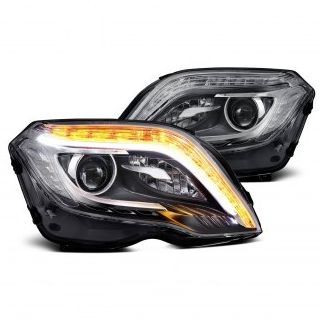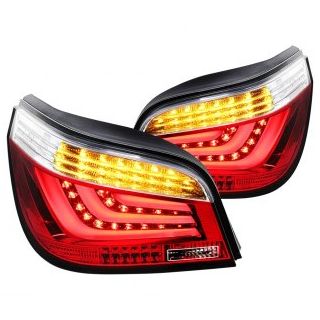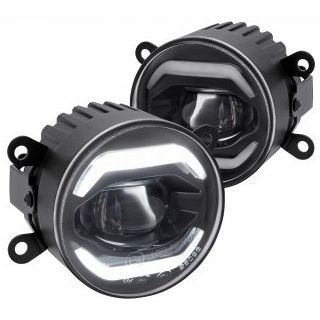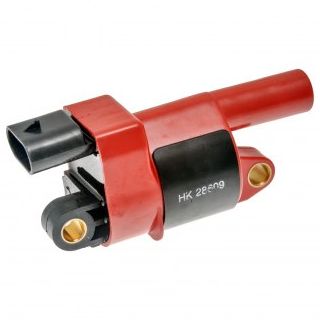
Bridgestone Tires is one of the best-known names in the industry, sporting a huge lineup of models that competes in virtually every major tire segment. Its tires score consistently well both in industry testing and consumer reviews, and therefore, the brand is a safe bet for anyone looking for a new set of premium tires. However, much like Pirelli, the brand’s premium reputation comes at a cost, with many of Bridgestone’s tires retailing for a higher price than their competitors.
For drivers who need new tires but don’t want to shell out for an expensive set of Bridgestone-branded examples, there are plenty of other options available. SlashGear has compiled a selection of cheaper alternative brands to consider, all of which offer models that sport comparable performance to a leading Bridgestone tire model. To provide an illustrative comparison, testing data from Consumer Reports backs up the choices, with the data comparing each tire across a range of categories from wet and dry braking to expected lifetime mileage.
Kumho
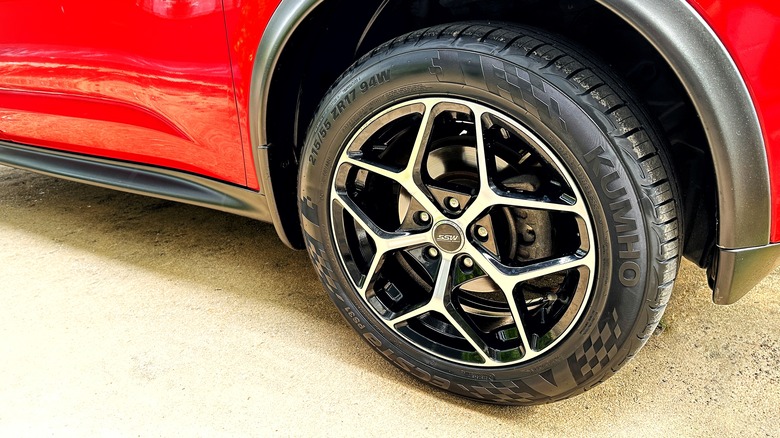
When Korean businessman Incheon Park encountered a shortage of vehicle tires for his logistics business, he decided to take matters into his own hands. He founded Kumho Tires in 1960 and at first the company was a very small operation, producing just 20 tires per day. However, the business grew extremely quickly, with Kumho opening its first overseas tire factory in Thailand in 1965 and opening facilities in Europe and America in the following decades.
Today, the company supplies OE tires to manufacturers including Volkswagen and BMW, and also offers a large range of other tires spanning most major car and truck segments. In many of those segments, Kumho’s tires retail for a cheaper price than their rivals, but offer comparable performance.
To take an example, Kumho’s Road Venture AT52 all terrain truck tires retails for $189 each, while Bridgestone’s Dueler A/T Revo 3 tires cost $249. Independent testing by Consumer Reports saw both tires score comparably, with the Kumho tire scoring better in ice braking and the Bridgestone taking the edge for ride comfort. In all other categories, the two tires were level, despite the additional cost of the Bridgestone.
Vredestein
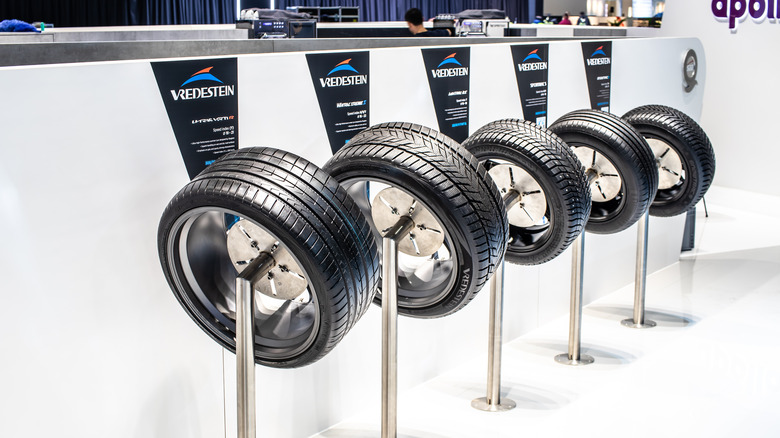
Dutch manufacturer Vredestein has been making car tires since 1912, and today is part of global tire giant Apollo Tires. In Europe, the company boasts OE partnerships with the likes of Ford and Volkswagen, primarily focusing on smaller cars. However, its non-OE products cover a much wider range of segments, including the all terrain truck tires segment, where it offers the Pinza AT.
Vredestein’s tire retails for $179, significantly less than the Bridgestone Dueler A/T Revo 3, which costs $249. The Vredestein tire scored higher for owner satisfaction, ice braking, and snow traction than the Bridgestone tire in Consumer Reports’ testing, and in all other aspects the two scored equally. In addition, the expected tire life of the Vredestein tire is 60,000 miles, while the Bridgestone only achieves 50,000 miles. Considering that the Vredestein tire is also significantly cheaper than its Bridgestone-branded counterpart, it seems that, in this comparison at least, the Dutch tire represents the better value for money.
Yokohama
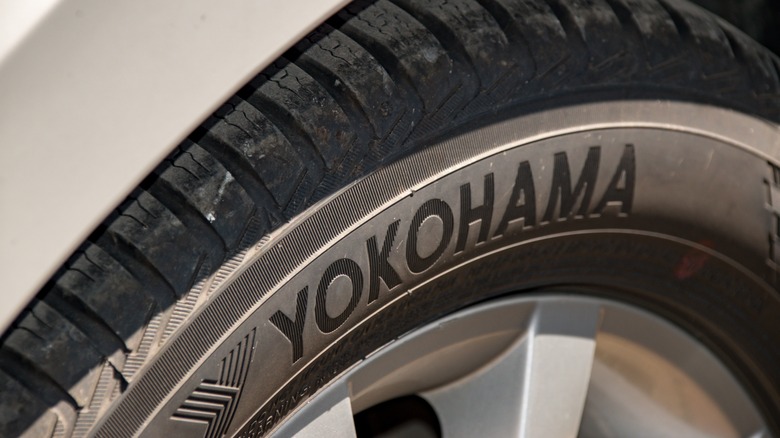
Another tire maker with over a century of history is Yokohama, which was founded as Yokohama Rubber Company in 1917. The Japanese manufacturer launched in the American market in 1969, and since then has slowly expanded its range to cover segments ranging from performance car tires to all terrain truck tires. The brand’s Geolandar A/T G015 tire competes in the latter category, retailing for $194.
Its closest Bridgestone-branded rival is the Dueler A/T Revo 3 tire, which has an MSRP of $249. The two tires were closely matched in testing by Consumer Reports, with the Yokohama tire claiming an edge in the ice braking and owner satisfaction categories but the Bridgestone scoring more favorably in rolling resistance and noise. This small difference in overall performance is unlikely to materially affect most drivers’ everyday journeys, and begs the question of whether the Bridgestone is really worth more than $50 per tire more than the Yokohama. There’s no definitive answer, but buyers looking for the best value for money may well decide that the Yokohama is the winner.
GT Radial
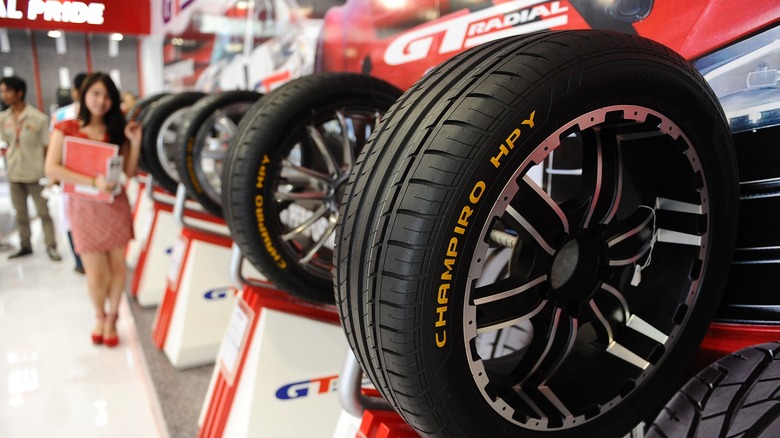
A division of Singapore-based Giti Tires, the GT Radial brand has been offered in North America for over 25 years, and has both production facilities and a research center in the U.S. It’s another brand with a wide-ranging lineup spanning many popular tire segments, including the popular all season tire segment. The $197 GT Radial Maxtour LX is the flagship competitor for that segment, with one of its main competitors being the $233 Bridgestone WeatherPeak.
In Consumer Reports testing, the GT Radial tire scored generally well against its Bridgestone rival, albeit with a few caveats. The Bridgestone boasted the higher expected lifetime mileage of the two, with 60,000 miles expected compared to the GT Radial’s 50,000 miles. The Bridgestone tire also scored significantly higher in snow traction testing and a little higher in ice braking, but the GT Radial came out on top for wet braking and noise.
Falken
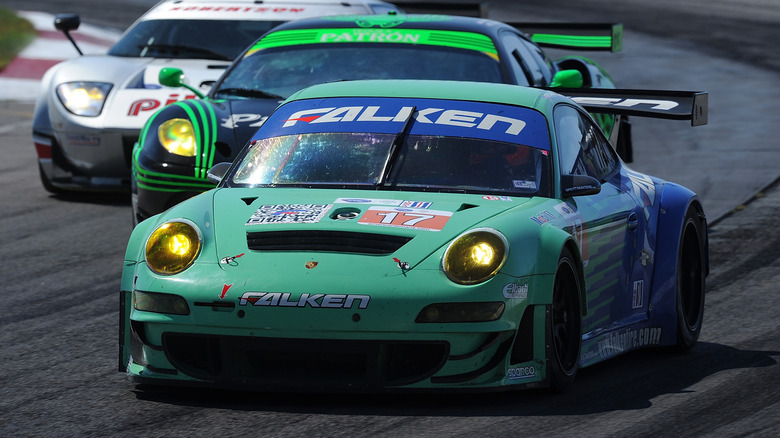
Originally founded in 1983, Falken was created as a premium tire brand to represent the best that its makers could offer in terms of technology and design. It was initially conceived as a division of Japanese tire maker Ohtsu Tire, but when the tire maker was bought out in the early ’00s, it became part of the Sumitomo corporation. Today, it’s based in California. Falken has developed a number of connections in motorsport, with its tires found everywhere from high-powered drift cars to apex-hunting track toys. Its range of road car tires is even more expansive, covering most major segments.
It includes performance winter tires like the Falken Eurowinter HS01, which costs $139, and competes against the $278 Bridgestone Blizzak LM005. Both tires scored generally very highly in Consumer Reports testing, although the Bridgestone had the edge overall. The Bridgestone tire beat the Falken tire in owner satisfaction, noise, and rolling resistance, but in all other aspects the two tires were equal. With such a big difference in price between the two, it’s easy to see why some owners prefer the Falken tire.
Nexen
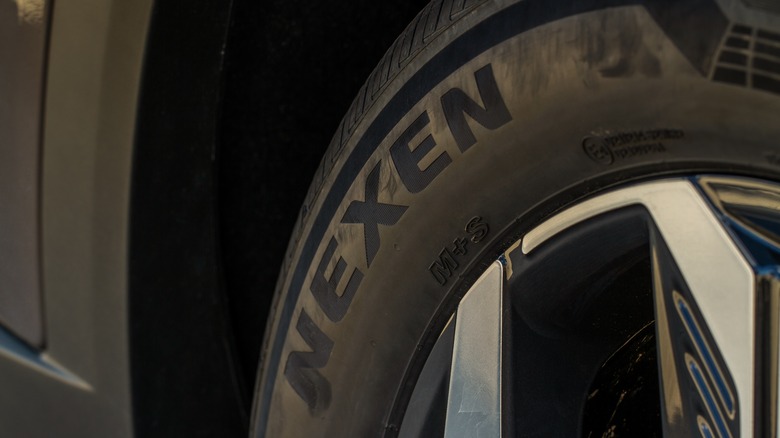
Initially trading as Heung-A Tire Company, Korean tire maker Nexen Tire can trace its history back to 1942. It has OE partnerships with many major car manufacturers, including Dodge, Mitsubishi, and Mercedes-Benz, but it still remains a relatively under-the-radar brand, at least compared to industry heavyweights like Bridgestone. Without being able to rely on the power of its brand name, Nexen has had to employ other means of tempting new customers — namely, making highly capable tires at affordable prices.
The Nexen Winguard Sport 2 is a good example. It competes in the performance winter tire category alongside the Bridgestone Blizzak LM005, but while the Nexen costs $137, the Bridgestone costs $278. In Consumer Reports testing, the Nexen scored slightly lower than the Bridgestone, with the latter faring better on dry braking, owner satisfaction, noise, and rolling resistance. In all other aspects, however, the two were equal. While these results suggest that Bridgestone is indeed a more capable tire overall, it also costs more than double the price of the Nexen. For some drivers, the small jump in performance won’t justify the leap in overall cost.
Cooper
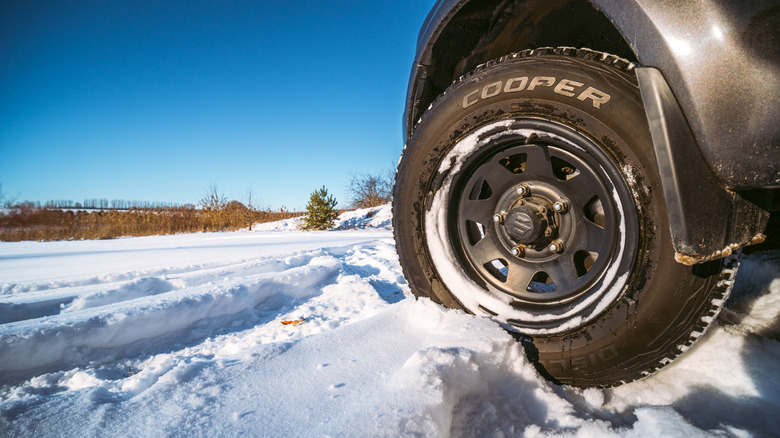
The Cooper brand can trace its roots back more than 100 years, originating in Akron, Ohio. Since then Cooper Tire has steadily grown into a global brand, selling tires that often compare well to the most premium brands but at a more affordable price. For comparison, Cooper’s $144 Zeon RS3-G1 tire competes in the ultra high performance all season tire category against Bridgestone’s $170 Potenza RE980+.
Both have their advantages according to Consumer Reports testing, with the Cooper tire outperforming the Bridgestone in terms of rolling resistance and vice versa in snow traction. In all other aspects, the two tires are equally matched, despite the Cooper tire having the clear edge when it comes to MSRP. Both tires should last an equally long time as well, with the expected lifetime mileage for both clocking in at 55,000 miles. That’s above average compared to most rivals, with the worst rated tire in the category lasting for just 35,000 miles while the best in class lasts 60,000 miles.
General
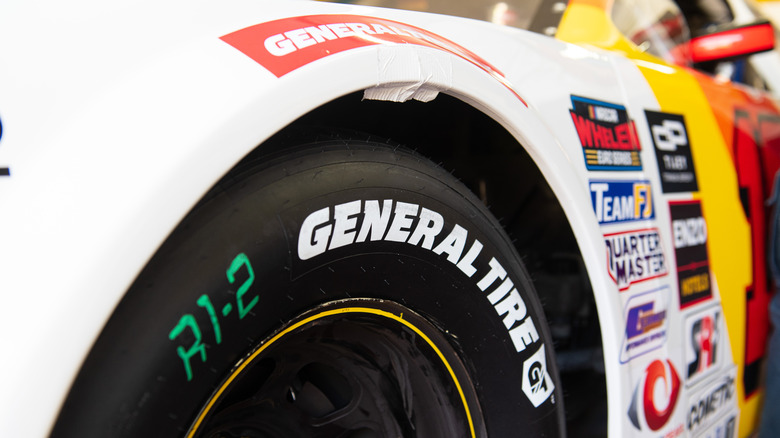
Cooper Tire isn’t the only brand that can trace its heritage back to Akron, Ohio. The city is also the birthplace of General Tire, which focused on truck tires in its early years but has since expanded to cover a range of popular segments. Among its current lineup is the General G-Max RS, an ultra-high-performance summer tire that retails for $144. Its nearest Bridgestone rival is the Potenza Sport, which sports an MSRP of $189. Both of which have been tested by Consumer Reports.
Both the Bridgestone tire and the General tire score perfect marks for dry braking, handling, and hydroplaning resistance, and they both score well for low noise levels. The General tire fares slightly better in wet braking and rolling resistance, while the Bridgestone is the winner for reported owner satisfaction. They are, overall, very closely matched, although the significantly lower MSRP of the General Tire might be enough to sway buyers looking to pick between them.
Hankook
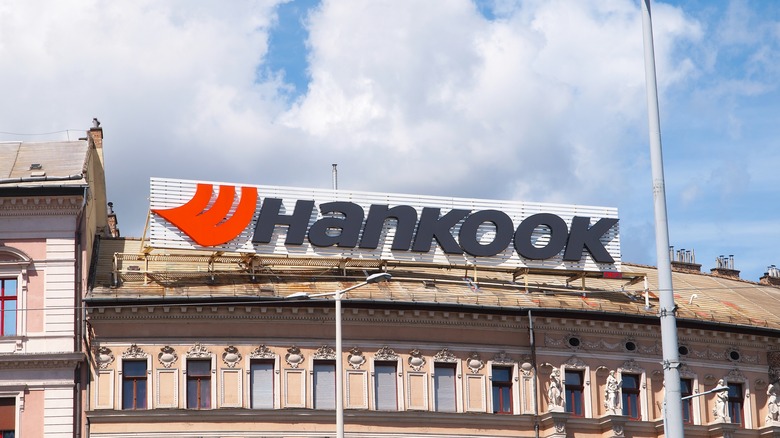
Korea’s Hankook Tire was first established in 1941, later expanding to the American market in the ’80s and opening a dedicated research facility in Akron, Ohio in 1992. The brand has OE partnerships with several prestigious car manufacturers such as Porsche, BMW, and Mercedes-Benz, but its tire lineup is just as much worth considering for drivers of more everyday vehicles. That’s because many of its best offerings sport similar performance to industry giants like Bridgestone, but undercut them in price.
In the highly competitive winter/snow tire segment, Hankook offers the Winter i*cept iz2 tire for $113, while Bridgestone sells its Blizzak WS90 tire for $131. Consumer Reports rated both tires equal in terms of handling and wet braking, while the Hankook came out on top in rolling resistance testing. The Bridgestone did perform better in categories like dry braking and hydroplaning resistance, however, scoring slightly better overall but perhaps not enough to justify its additional asking price.
Arctic Claw
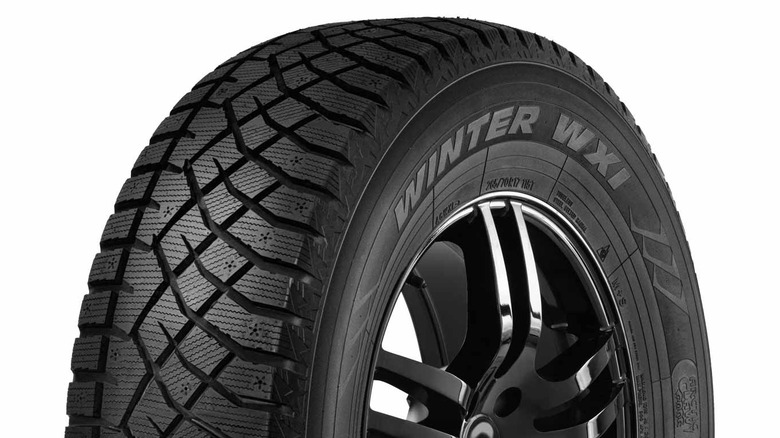
The Arctic Claw brand is marketed by TBC Brands, a Florida-based tire distributor that’s been in business since 1956. Arctic Claw, as its name suggests, offers specialized winter tires, with its $157 WXI tire competing against the $194 Bridgestone Blizzak DM-V2. Rather than using its own factories, Arctic Claw uses third parties to manufacture its tires, with the WXI being manufactured by Toyo Tires in Malaysia.
The Arctic Claw tire offers many of the same benefits as its pricier Bridgestone rival — superior snow traction being the most notable — and also suffers most of the same downsides. According to Consumer Reports, wet braking and overall handling are both rated poorly, and neither tire scores particularly highly for road noise, although the Bridgestone performs slightly better. The Bridgestone tire achieved a perfect 5/5 score for its ice braking, while the Arctic Claw lost a point in comparison. That might be enough to sway some buyers towards the Bridgestone, but for those looking for the best value for money, the Arctic Claw’s lower asking price makes it well worth considering.



